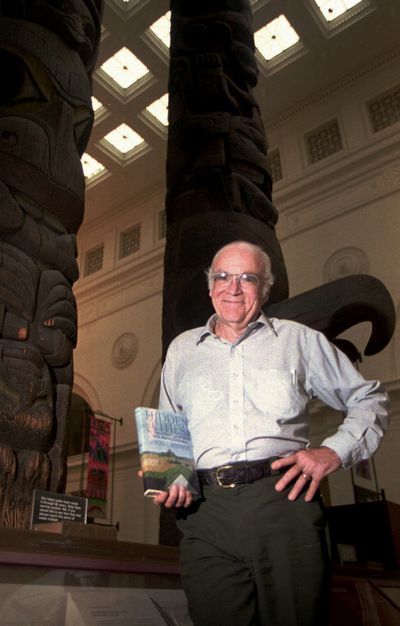‘Renaissance man’ Kennedy dies
Reporter, author led Smithsonian

One day deep in the administration of George W. Bush – a time of tumult among environmentalists and conservationists – Roger Kennedy shook his head and sighed. The Endangered Species Act was in the crosshairs of a Republican Congress, and his beloved National Park Service, which Kennedy directed from 1993 to 1997, was under assault.
Kennedy was disgusted by the partisan bickering. When had stewardship of the environment become a political football? he asked a reporter. Don’t they know that much of the landmark environmental legislation was passed when a Republican, Richard Nixon, was in the White House?
“In those days there was more civility; members of Congress may have disagreed, but they went out to dinner together,” Kennedy said. “One guy would come up with the beginnings of the Clean Water Act or the Clean Air Act and go to another senator and say: ‘We need to pass this. It’s the right thing to do.’ And they would pass it, and Nixon would sign it. Different times.”
Kennedy often invoked the spirit of bipartisan- ship in his various roles as passionate defender of all things American – its history, its landscapes and its diverse population.
Kennedy, 85, died of melanoma Friday at his home in Rockville, Md.
“Roger Kennedy was a Renaissance man,” said National Park Service Director Jonathan Jarvis.
He was a Washington correspondent and covered the Supreme Court for NBC, and wrote and presented documentaries for PBS as well as two television series for the Discovery Channel. Kennedy also was a bank chairman, failed political candidate, vice president of the University of Minnesota and an executive with the Ford Foundation.
He served six different presidents, and in the 1950s was a special assistant to the U.S. attorney general, the secretary of Health, Education and Welfare and the secretary of Labor. He wrote more than a dozen books.
It was as director of the Smithsonian’s National Museum of American History that Kennedy left an indelible mark. He began his 13-year tenure in 1979 and sought to cast open the doors on the stuffy, traditional institution often referred to as “America’s attic.”
His offerings spanned the mass market – displaying Dorothy’s red slippers from the movie “The Wizard of Oz” – to the socially provocative – a painful look at the internment of Japanese-Americans during World War II.
Times were equally rocky when President Bill Clinton tapped Kennedy to lead the park service. It was a time of downsizing for the federal government, and Kennedy presided over painful cuts to the agency.
Kennedy bristled when called before Congress to assign a value to park structures and landmarks for corporate bidders. He disapproved of such ideas, arguing that the national parks were no less repositories of American cultural and historic treasures than museums and ought not to be sold.